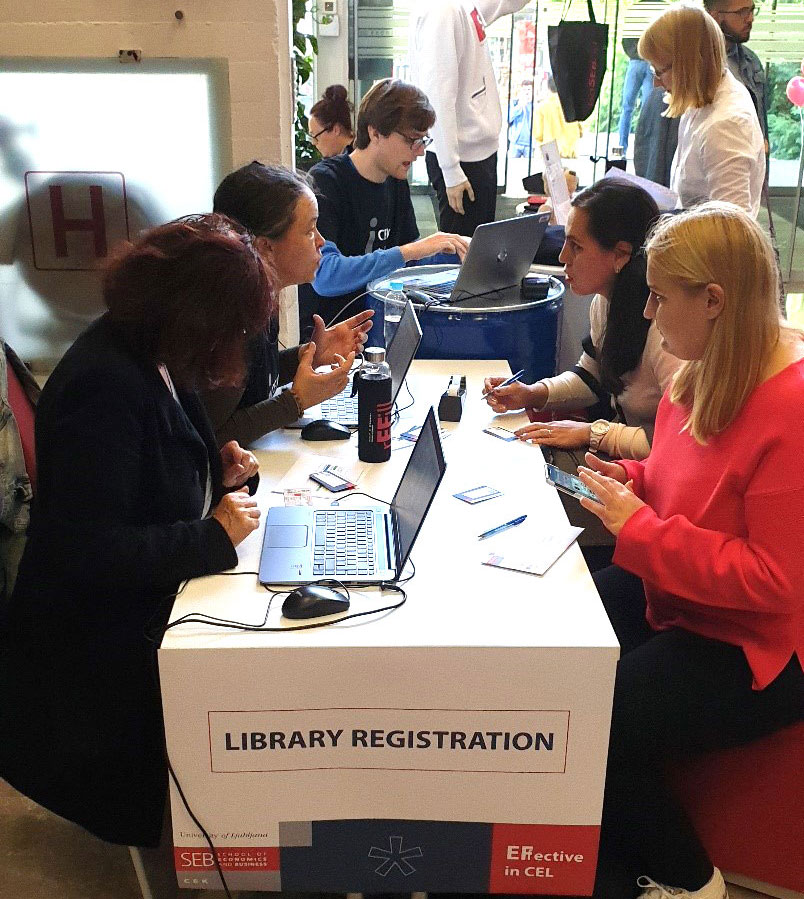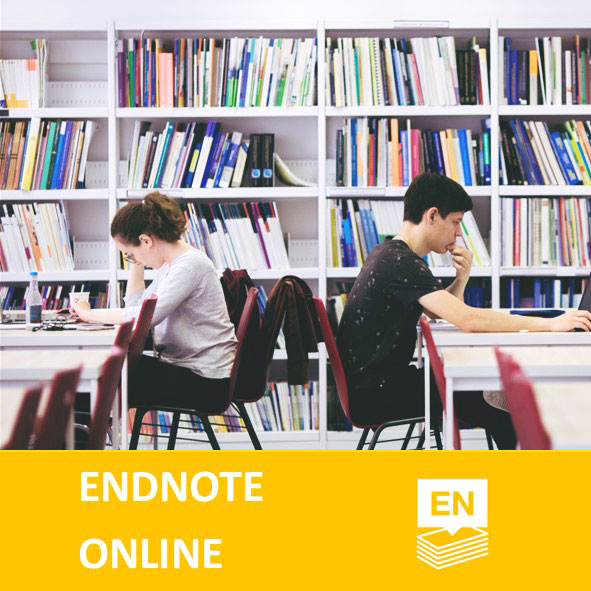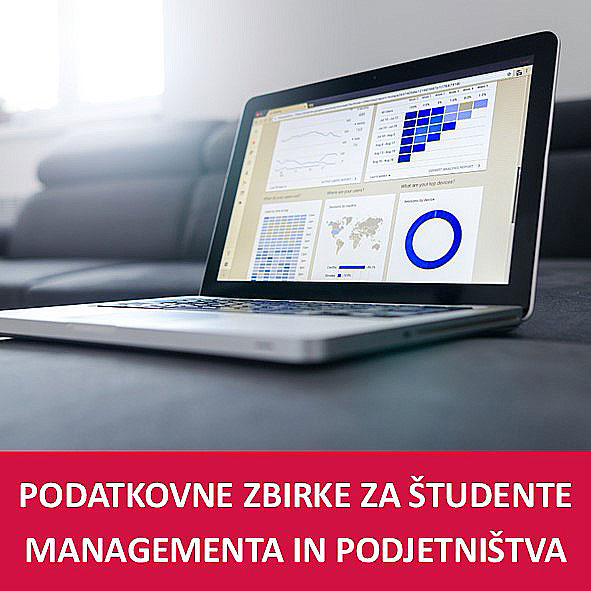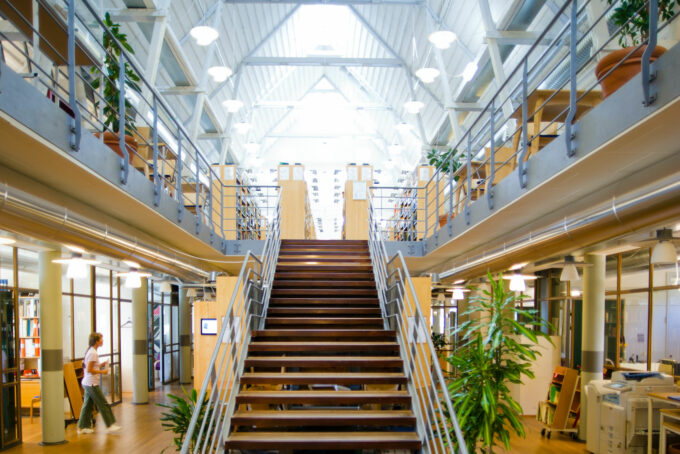
User Experience in Libraries: Insights from the Central Economics Library at the University of Ljubljana
„The results of the decision to apply UX methods when introducing new services are reflected in the increased number of active users, the increased use of resources, and a greater awareness of the importance of the library among school administrators“, says Tomaž Ulčakar, head of the Central Economics Library in Ljubljana, describing his experience with UX.
At the University of Ljubljana (UL), there is not one central university library. In fact, each faculty or academy has its own library: 38 in total. One of these 38 libraries is the Central Economics Library (CEL) at the School of Economics and Business (SEB LU), where Tomaž Ulčakar works.
He attended a conference in Glasgow in 2017 that opened his eyes to User Experience (UX). Since then, a lot has happened at the CEL: there was a pop-up library, a shift in focus onto the main users and the whole concept of user training has been reworked.
An interview with Tomaž Ulčakar, Central Economics Library and Publishing Office at the School of Economics and Business, University of Ljubljana.

What are your goals with UX? Did you achieve them?
The goal of the Central Economics Library is to transform itself into a modern Centre of Knowledge (CeK), where activities such as the classical library, the digital library, the information center, the publishing, the Open Access, the infrastructure centre with two laboratories (behavioural lab and financial lab) will work together as one large modern knowledge incubator.
Which UX methods do you apply at the CEL?
We use mostly: brainstorming, stakeholders and users interviews, sometimes also kickoff meetings.
Can you give us a practical example that worked, where you applied UX to solve a problem?
A good example of the use of UX in CEL was the design of online services for users at the beginning of the pandemic in March 2020, when we used all of the above methods in combination in our Zoom meetings to launch the new online product CEL outside the library.
To apply UX methods, you need library users who are willing to participate. How do you manage to find and motivate them?
I find this part as the hardest. Yes, it is true; you need a lot of energy for persuading users to participate. We have some very enthusiastic colleagues who are willing to enter the user comfort zone and motivate them: with words as we are trying to improve our services. In the past, we also used our social media channels to encourage the participation in UX with an award for the best idea (when we were searching a new name for our study places or for the e-tutor).
When and why did you start working with UX? What does that mean practically?
Based on Andy Priestner’s presentation at the European Business School Librarian’s Group (EBSLG) Annual General Meeting 2017 (German) in Glasgow and on his book “User Experience in Libraries: Applying Ethnography and Human-Centred Design”, we decided to change the whole user concept of the library.
In 2017, we segmented the users, observed their habits and made the first decisions that we need to adapt the services to the main users: full-time students. Therefore, at the beginning of the academic year in October 2017, we went out of the library with the pop-up library and presented the services at the booth.

Pop-up-Library: Registration
In 2018, we worked a lot to change the focus of the librarians in the circulation department and also to do some research among users on how they behave in our spaces, what they are looking for, how they use our facilities, etc. We also have a young staff member who, with his fresh perspective on the library and its services, has motivated other colleagues to make even bigger changes in the UX dimension.
In 2019, after analysing the existing model and based on users’ wishes expressed at the counter, in personal conversations and surveys, we decided to change the whole concept of user training. We offered narrowly specialised presentations with e-resource workshops for areas of study. We also approached professors with this concept, inviting library experts to individual courses to present relevant e-resources.
All training presentations and workshops for an academic year are presented on the LibCal platform. We also use the platform as an e-tutor for all library services, such as membership and loans, remote access, trainings, etc. For each trainings promotion is prepared with leaflet and promotion channels.
This move toward users was critical during Corona 2020 and 2021, when the library kept in touch with users through brief online-zoom service presentations. We put almost all services online. Statistics show a sharp increase in the use of remote access to e-resources:

Statistics show a sharp increase in the use of remote access to e-resources
In 2020 and 2021, we also worked hard to provide a good user experience on Open Access, support for researchers, and a good information service on Open Access. The OA experience at our school is well represented in a colleague’s poster at the Open Science Conference 2022. In the colleague’s presentation, we could see what was done to achieve such a strong use of the institutional repository by researchers in the last year.
The results of the decision to use the methods of UX when introducing new services are reflected in the increased number of active users, increased use of resources, and, last but not least, greater awareness of the importance of the library among school administrators.
What are the most important lessons you have learned from applying UX?
UX is a quite convenient method for applying new services but it also takes a lot energy at the beginning, when you start planning it. You need a lot of strength to manage the process and to organise ideas. But it can also be very pleasant, you do some team building with colleagues and you are getting to know your users.
What are your tips for libraries that would like to start with UX? What is a good starting point?
To start UX, I would recommend an observation of library users, e.g., what they do, where they go, how they use the library, and then systematically start with the services you want to change or (re)design. Start with a UX method that you think is easiest to use, or rather, that you think can get you results.
This might also interest you:
- The Hashtags #libux, #uxlib and #uxlibs on Twitter are filled with active conversations and ideas about UX in libraries
- Can User Experience Research Be Trusted? A Study of the UX Practitioner Experience in Academic Libraries
- An Increased Use of the Institutional Repository by Researchers from 7% to 45%: Lessons from the Open Access Campaign at the School of Economics and Business, University of Ljubljana
- User Experience in Libraries: Building a Human-centric Organisation at the National Library of Estonia
- User Experience in Libraries: Insights from the University Library of Hildesheim
- User Experience in Libraries: Insights from the SLU University Library
- User Experience for Libraries: Insights from the University Library of the Cergy Paris University
- User Experience in Libraries: Insights from the Digital Finna Services at the National Library of Finland
- User Experience for Libraries: A Multi-site Approach at the University of Westminster
- User Experience in Libraries: Insights from the Library of the University of Amsterdam
- User Experience in Libraries: 4 Best Practice Examples from the ZBW
- User Experience for Libraries: The Best Tools and Methods for Beginners
Tomaž Ulčakar is the head of the Central Economics Library (CEL), the European Documentation Centre and the Publishing Office at the School of Economics and Business at the University of Ljubljana (UL). From 2019 to 2021, he was the president of the Library Council, where the library activities of the 38 academic libraries at the faculties and academies of the UL are coordinated. Tomaž Ulčakar can be found on SICRIS, the Slovenian Current Research Information System.
Portrait: Tomaž Ulčakar©
Featured Image: SEB LU© Yearly Review, academic year 2020-2021. All other graphics: SEB LU©
View Comments

Barcamp Open Science 2022: Connecting and Strengthening the Communities!
Creating a platform for a relaxed exchange with international like-minded people on...






